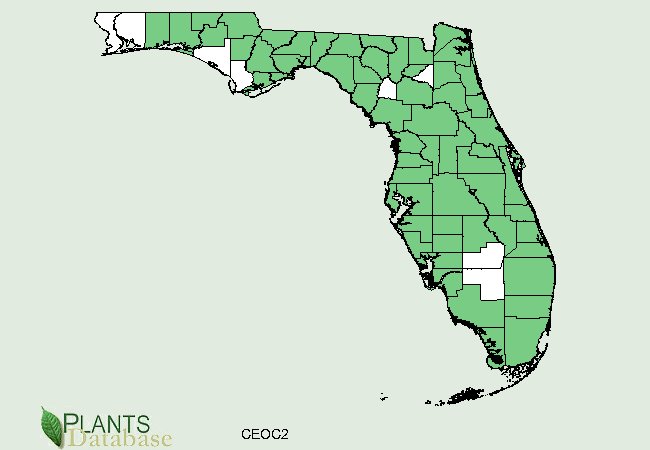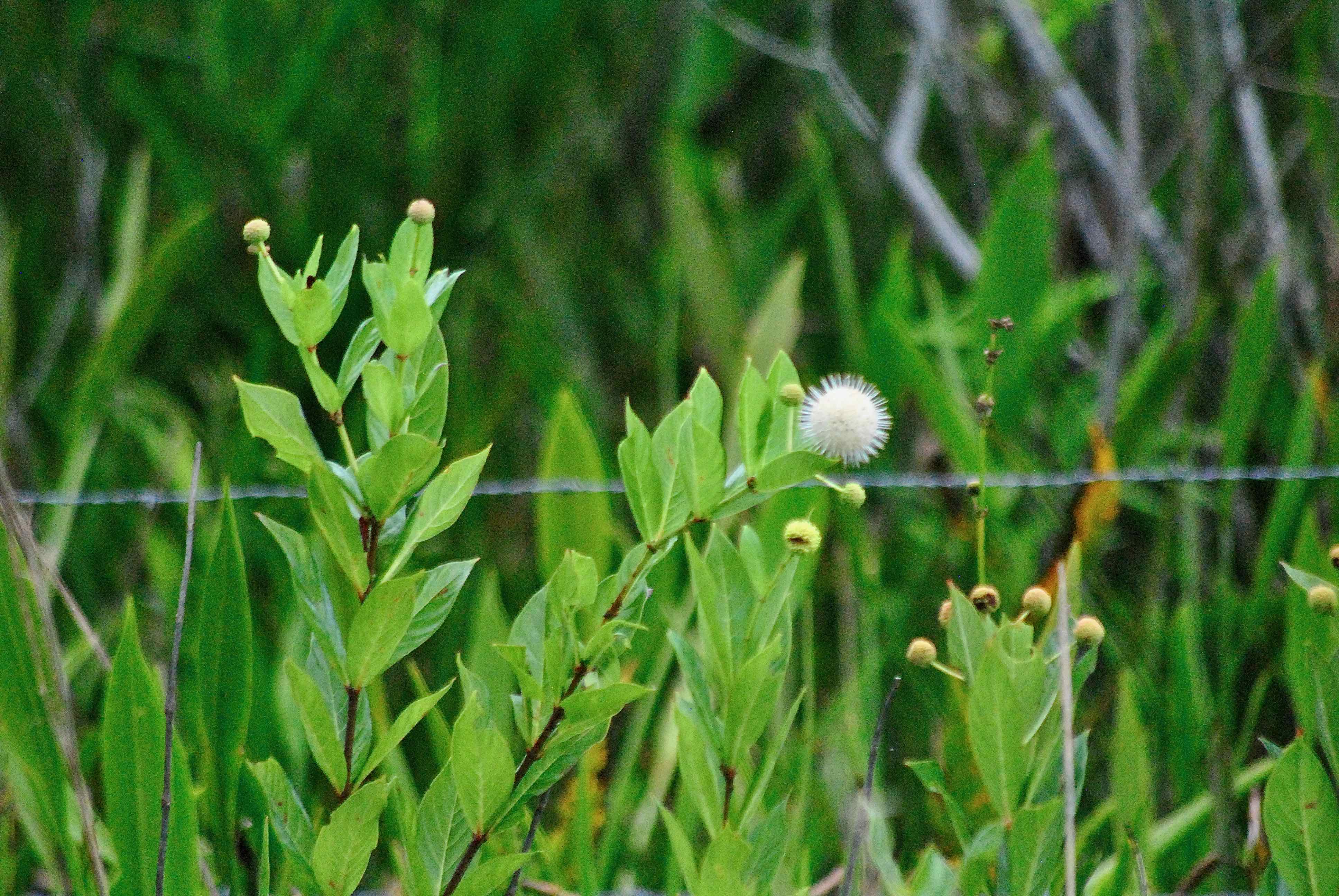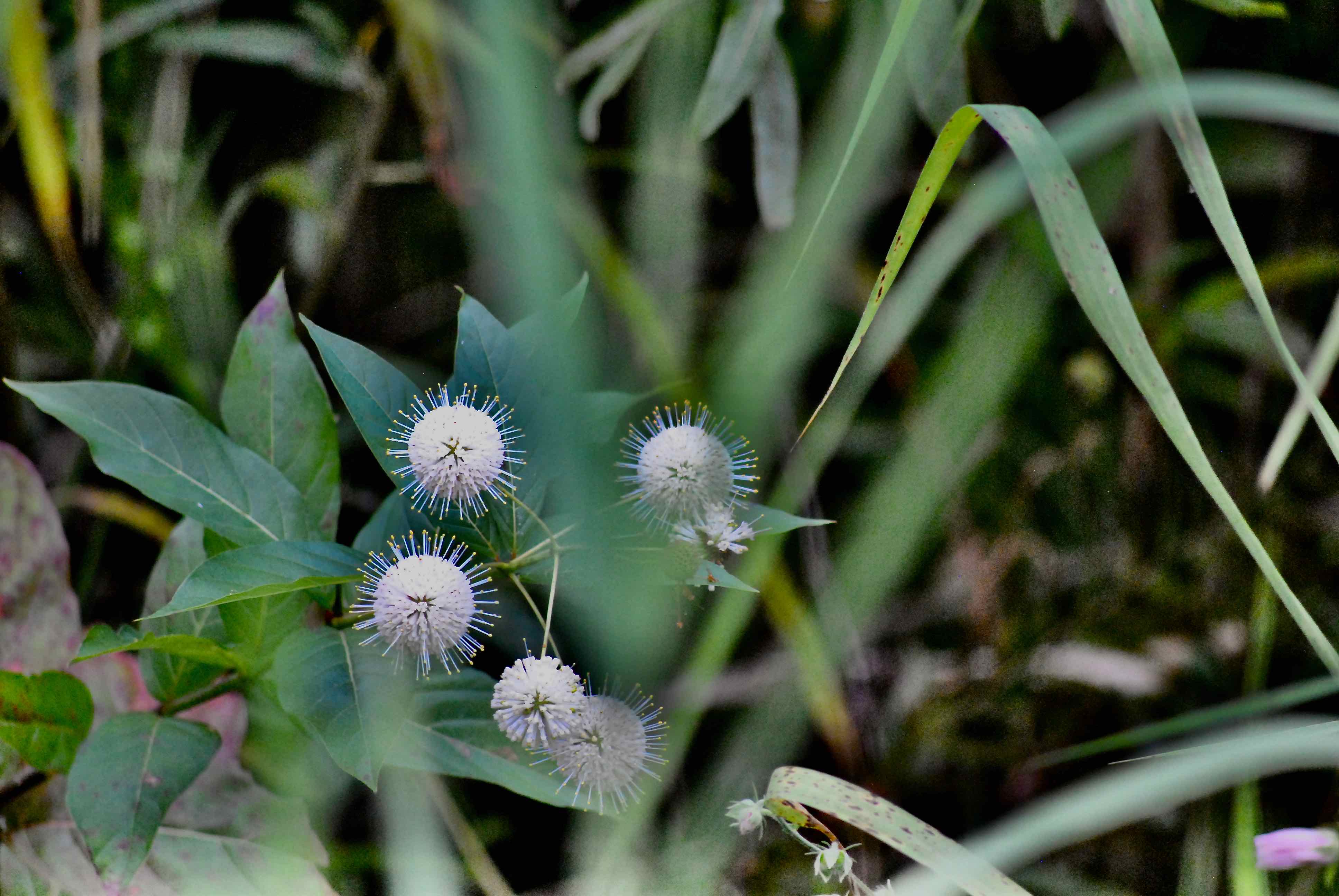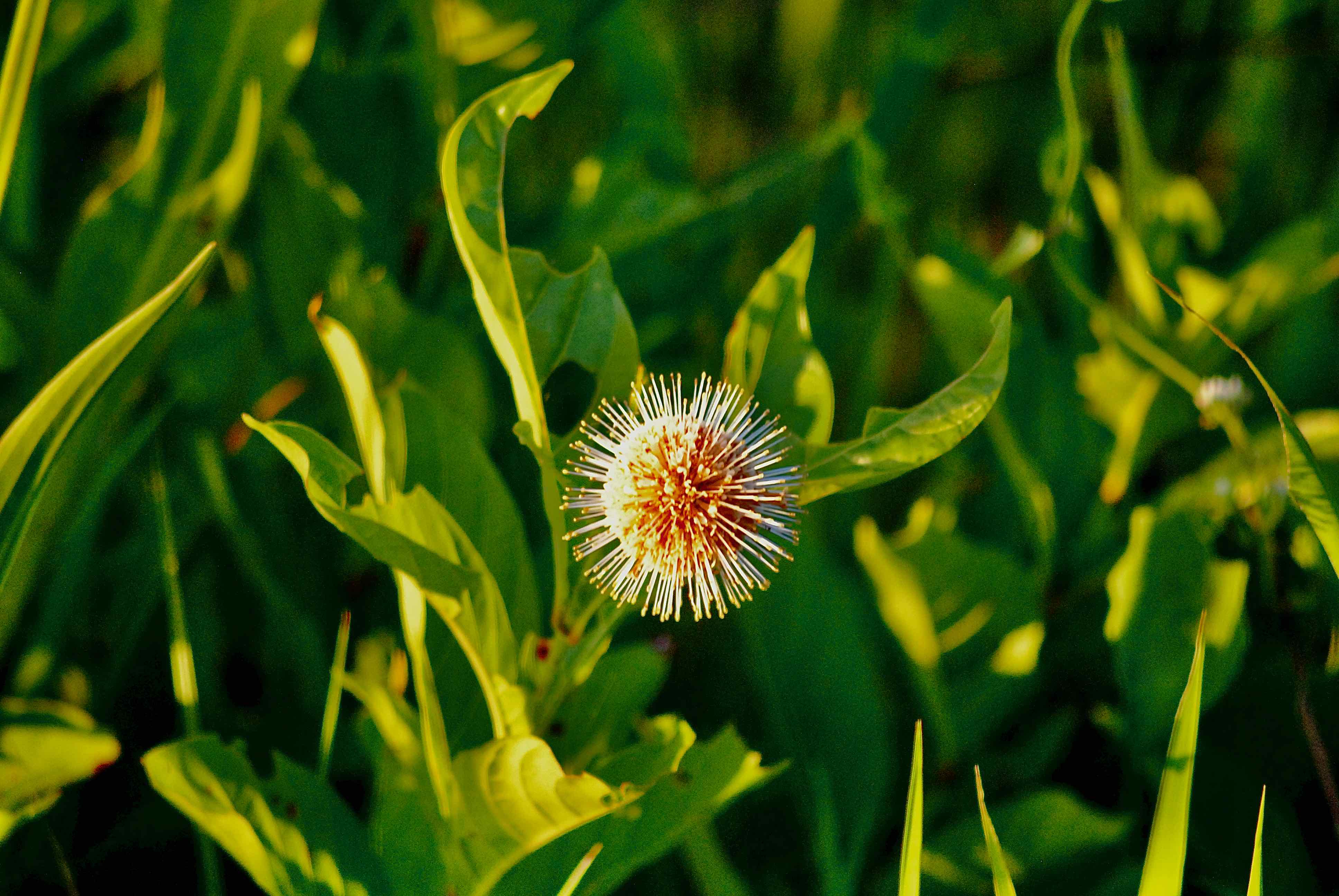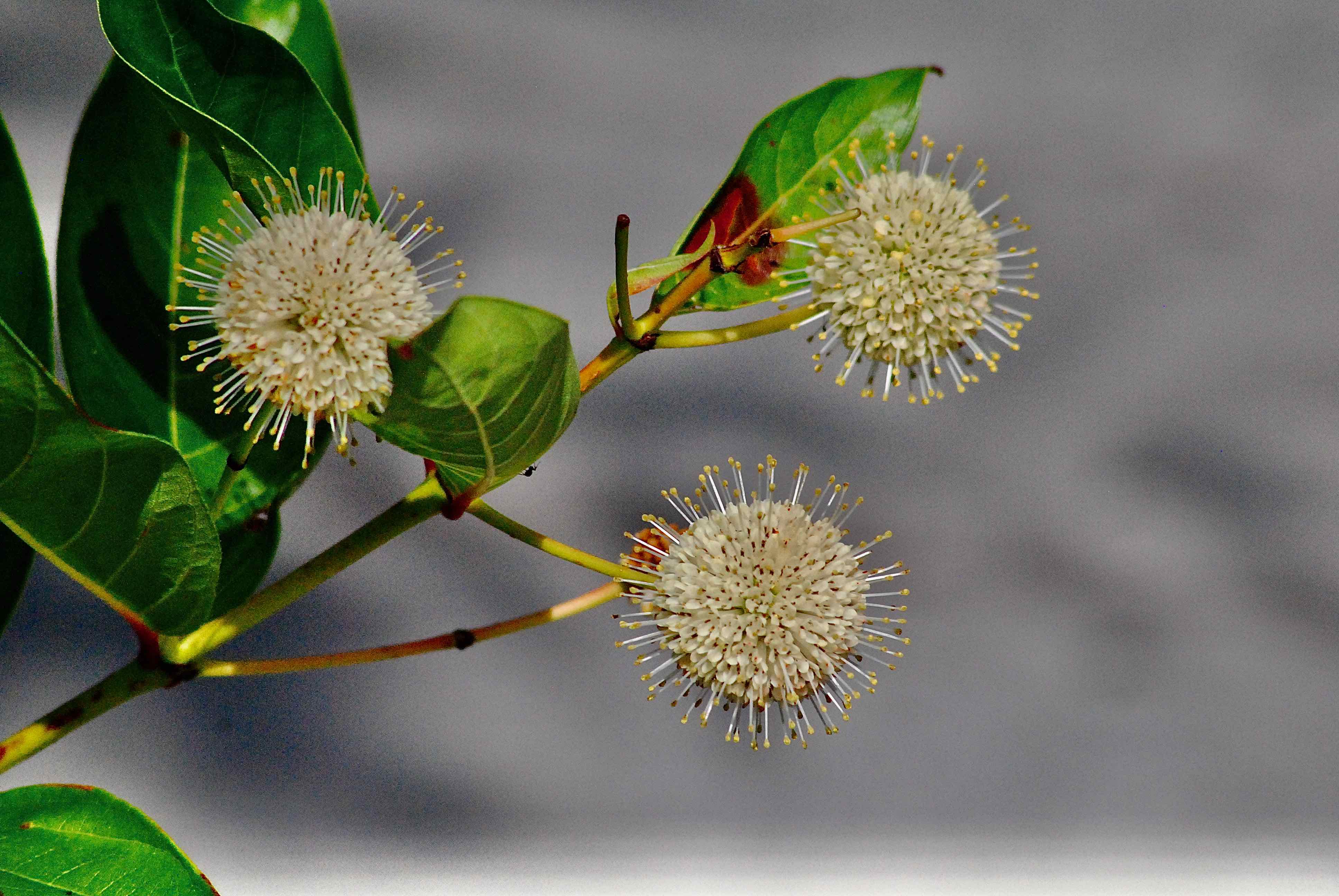
Buttonbush, photographed at Shark Valley, Everglades National Park, Miami-Dade County, in May 2014.
If you're a wood duck, a deer, a butterfly or a bee, you gotta love buttonbush, Cephalanthus occidentalis, because of the vital role it plays in your life. It offers both food and shelter. For us modern-day humans, however, it's a plant easy to take for granted, other than those eye-catching balls of tiny flowers. But not so much for North America's original residents, who relied on buttonbush as a source of medicine.
Buttonbush is native to Florida, found throughout the state as well as much of the eastern United States and Canada. Its native range extends into the Great Plains, and there are pockets of buttonbush in Arizona and California, according to the U.S. Department of Agriculture. It's also native to Cuba, Mexico and Central America.
It is a water-loving plant, found along the edges of swamps and streams, ponds and lakes in places that get full sun. It will grow in places that are covered with water a portion of the year. Buttonbush can be shrubby or tree-like, usually reaching 10 or 20 feet tall. Flowers bloom early spring through summer.
Leaves are elliptical in shape, rounded or pointed at the base, pointed at the apex, or tip, more than twice as long as they are wide. They are arranged opposite each other along the stem. Buttonbush is deciduous, meaning it drops its leaves for a short time each winter. The bark is smooth in younger plants, rough in older. It grows as a shrub or small tree in wet areas, along swamps and the banks of ponds and streams that get full sunlight. As we noted, it usually grows to about 10 to 20 feet high but can approach 30 feet in Florida. As you might guess from its habitat, it does not tolerate drought well. It is a pioneer species, meaning it will be among the first plants to colonize a fresh clearing. It will establish itself in rotting logs and stumps.
This is an important plant for many kinds of animals. Wood ducks will raise their brood and find cover from predators in its tangles. Other ducks and many shorebirds and wading birds eat buttonbush seeds. Deer browse on it; in some places, it's an important part of their diet. Bees make honey from its nectar; many butterflies, including the clouded skipper and Delaware skipper, love the nectar. Hummingbirds visit not only for the nectar but also to nab a bug or two. Many birds will nest in its branches.
Buttonbush was an important part of the Native American medicine cabinet. The Chickasaw and Choctaw used buttonbush to make an eye wash, an antidiarrhea medicine, an anti-inflammatory and arthritis medication. They chewed the bark to relieve toothaches.
The Seminoles used buttonbush for headache relief, for fevers, stomach aches, menstrual problems, constipation, jaundice, urinary problems and as a general tonic. The odd thing is that buttonbush also contains a poison, cephalathin, which can cause vomiting, paralysis, and convulsions if ingested.
It is cultivated and used in landscaping — it will grow from seeds or cuttings — but its need to be wet might make it impractical for some home gardens. Fun fact: according to the U.S. Department of Agriculture, it takes 149,000 buttonbush seeds to equal one pound.
Other names: common buttonbush, button ball and button willow. It is a member of the Rubiaceae, or madder, family, which includes rubber trees and coffee.
Shark Valley, Everglades National Park
Click on photo for larger image
U.S. Department of Agriculture Distribution Maps
